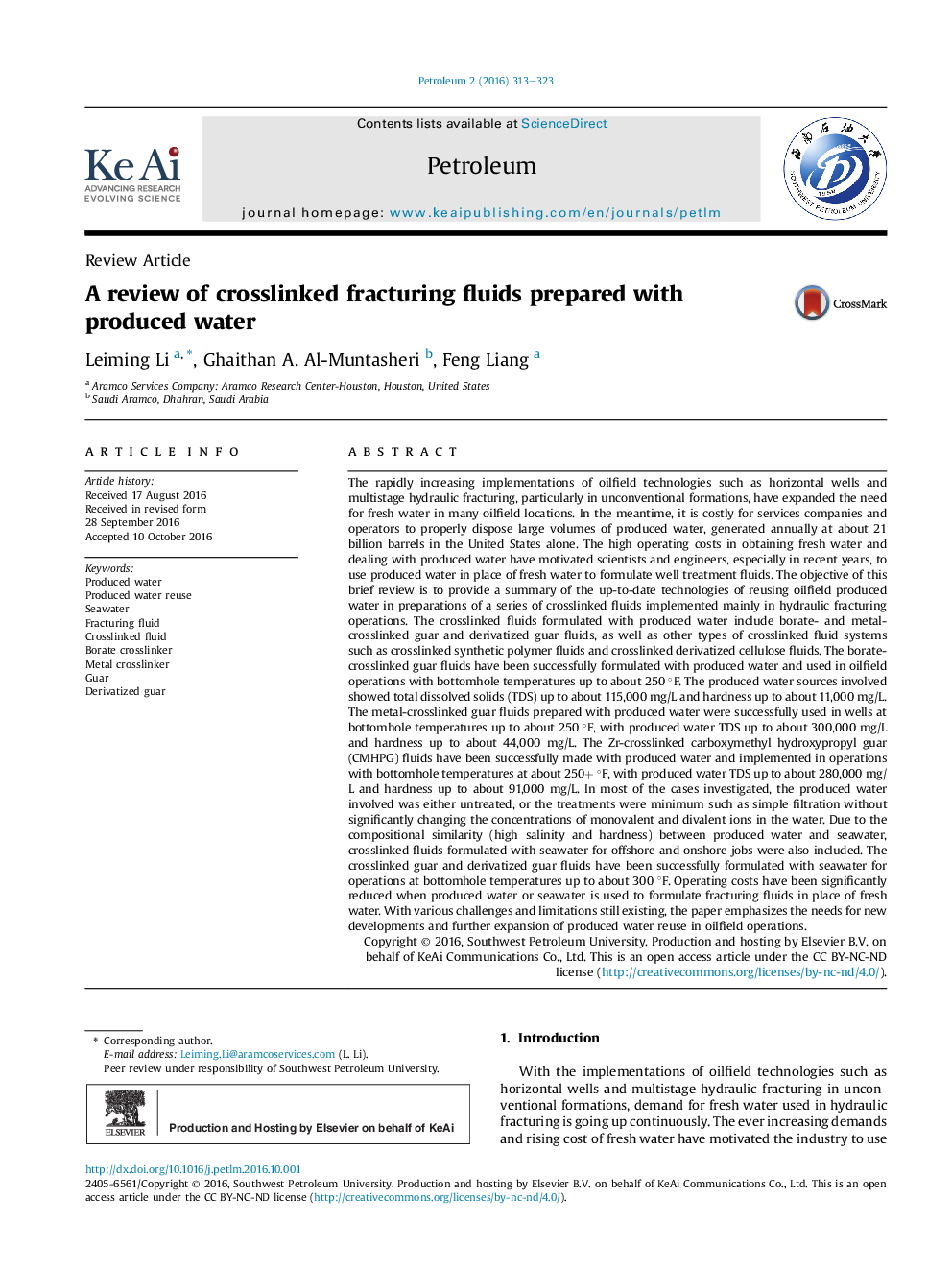| کد مقاله | کد نشریه | سال انتشار | مقاله انگلیسی | نسخه تمام متن |
|---|---|---|---|---|
| 5026524 | 1369870 | 2016 | 11 صفحه PDF | دانلود رایگان |
The rapidly increasing implementations of oilfield technologies such as horizontal wells and multistage hydraulic fracturing, particularly in unconventional formations, have expanded the need for fresh water in many oilfield locations. In the meantime, it is costly for services companies and operators to properly dispose large volumes of produced water, generated annually at about 21 billion barrels in the United States alone. The high operating costs in obtaining fresh water and dealing with produced water have motivated scientists and engineers, especially in recent years, to use produced water in place of fresh water to formulate well treatment fluids. The objective of this brief review is to provide a summary of the up-to-date technologies of reusing oilfield produced water in preparations of a series of crosslinked fluids implemented mainly in hydraulic fracturing operations. The crosslinked fluids formulated with produced water include borate- and metal-crosslinked guar and derivatized guar fluids, as well as other types of crosslinked fluid systems such as crosslinked synthetic polymer fluids and crosslinked derivatized cellulose fluids. The borate-crosslinked guar fluids have been successfully formulated with produced water and used in oilfield operations with bottomhole temperatures up to about 250 °F. The produced water sources involved showed total dissolved solids (TDS) up to about 115,000 mg/L and hardness up to about 11,000 mg/L. The metal-crosslinked guar fluids prepared with produced water were successfully used in wells at bottomhole temperatures up to about 250 °F, with produced water TDS up to about 300,000 mg/L and hardness up to about 44,000 mg/L. The Zr-crosslinked carboxymethyl hydroxypropyl guar (CMHPG) fluids have been successfully made with produced water and implemented in operations with bottomhole temperatures at about 250+ °F, with produced water TDS up to about 280,000 mg/L and hardness up to about 91,000 mg/L. In most of the cases investigated, the produced water involved was either untreated, or the treatments were minimum such as simple filtration without significantly changing the concentrations of monovalent and divalent ions in the water. Due to the compositional similarity (high salinity and hardness) between produced water and seawater, crosslinked fluids formulated with seawater for offshore and onshore jobs were also included. The crosslinked guar and derivatized guar fluids have been successfully formulated with seawater for operations at bottomhole temperatures up to about 300 °F. Operating costs have been significantly reduced when produced water or seawater is used to formulate fracturing fluids in place of fresh water. With various challenges and limitations still existing, the paper emphasizes the needs for new developments and further expansion of produced water reuse in oilfield operations.
Journal: Petroleum - Volume 2, Issue 4, December 2016, Pages 313-323
